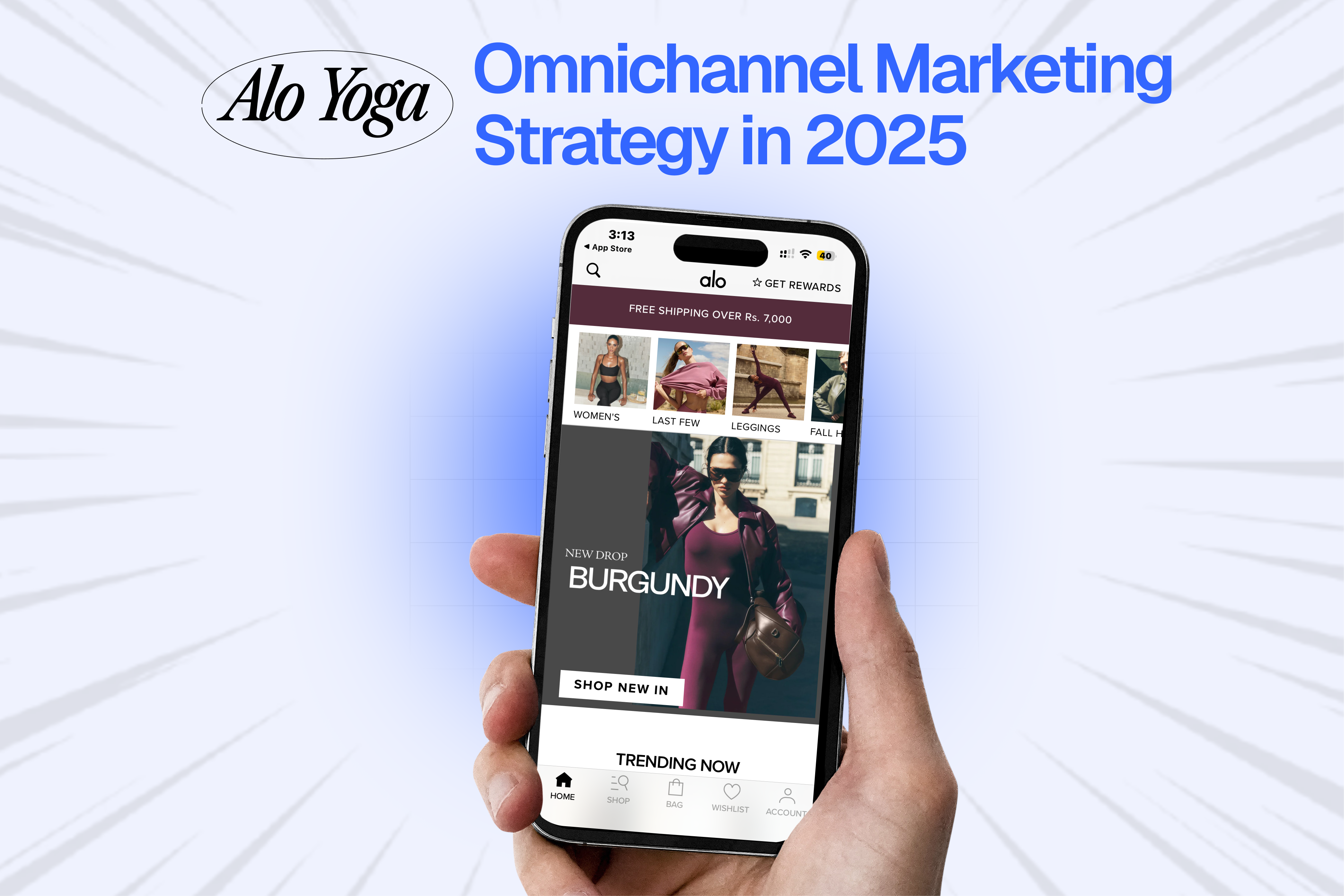$332.6 million in net sales in Q1 of 2025 makes ELF Beauty the only cosmetics giant to achieve net sales growth consecutively for 26 quarters.
A significant part of this “unheard” success, especially in the beauty and skincare space, is their omnichannel marketing strategy.
When most retail brands run an average of two campaigns a year, Elf does 15. Crazy!
But that's just the tip of the iceberg.
Ahead, I’ll show you Elf Cosmetic’s successful omnichannel marketing strategies, which, if you replicate properly, will increase conversions and sales.
What makes Elf Cosmetics a market leader?
Founded in 2004 by Joseph Shamah and Scott Vincent Borba, e.l.f. Beauty has positioned itself as the go-to brand for consumers seeking high-quality, affordable beauty products.
While studying Elf’s omnichannel marketing strategy, I noticed several industry leaders/critics/experts/investors repeatedly associated the brand with a “disruptive marketing engine” tag.
At first, I thought it might be PR, but as I read through multiple accounts where the company's leadership shared how they perceive and go about marketing or branding.
The brand prides itself on providing the best beauty products at an affordable price, fast.
The key highlight here is “FAST.”
A recent case explains how the company innovates at god speed. Elf’s CMO, Kory Marchisotto, shared how when their customers asked for an in-demand, trendy product, “bronzing drops.”
The brand got to work at not only creating but also improving upon the product and launched it for people to buy within six months.
ELF Cosmetics Omnichannel Marketing Strategy
Elf Consmetics omnichannel marketing strategy is designed to create a seamless and engaging experience across all customer touchpoints.
However, it wasn't the same as always, until a few years ago when Ekta Chopra (Chief Digital Officer, ELF Beauty) decided to go all in on omnichannel.
And for that, Ekta and her team started by partnering with a first-party data provider that helped them collect their customer’s information, including
- Demographics
- Age
- Beauty preferences (skin type, what products they like, etc.)
- Preferred channel for shopping
- How they use rewards
Using this granular level detail, the brand personalized every customer's shopping experience, across channels including Mobile App, SMS, email, push notifications, and In-app content.
And as Ekta described in her own words, “It’s our job to make sure that we’re not intruding or filling up their mailboxes with information that they’re not going to positively react to.”
This way, customers only receive personalized content across channels.
What role does the Elf Cosmetics Mobile App play?
And for a brand with the scale and reach of Elf, having a mobile app acts as a prime real estate on customers smartphones.
This brand visibility generates a higher ROI compared to paid ads, especially in times when rising CAC eats up the majority of the brand’s budget. Building an app presents a cost-effective alternative.
Because when customers see your app every time they use their phone, it subconsciously triggers their buying intent.
This explains why 9 in 10 shoppers use retail apps on their smartphones to shop online.
Now, even if you consider the upfront development cost, it’ll still be less than what top brands spend in a single Meta ad campaign.
Elf, recognizing this early, launched its app years ago, which to date generates a significant share of revenue.
And beyond sales, the app is the centerpiece for Elf's evolving omnichannel strategy, where the company does a lot more than just sell products.
5 CRO strategies from Elf Cosmetics App worth stealing
Below, we break down Elf mobile app CRO strategies one by one that help Elf stay at the top of their customer’s minds and eventually get them to buy again.
1. Try first, then buy
If you sell beauty or skincare products, you will hear this almost every day from your customers, “I wish I could try this lipstick or balm on myself.”
Online shopping brought the convenience of shopping from home, but it lacked the tangibility that customers value, like touching the item, feeling it, smelling it, or asking questions about the product.
To solve this customer’s objection, Elf uses a feature called “Try On.”
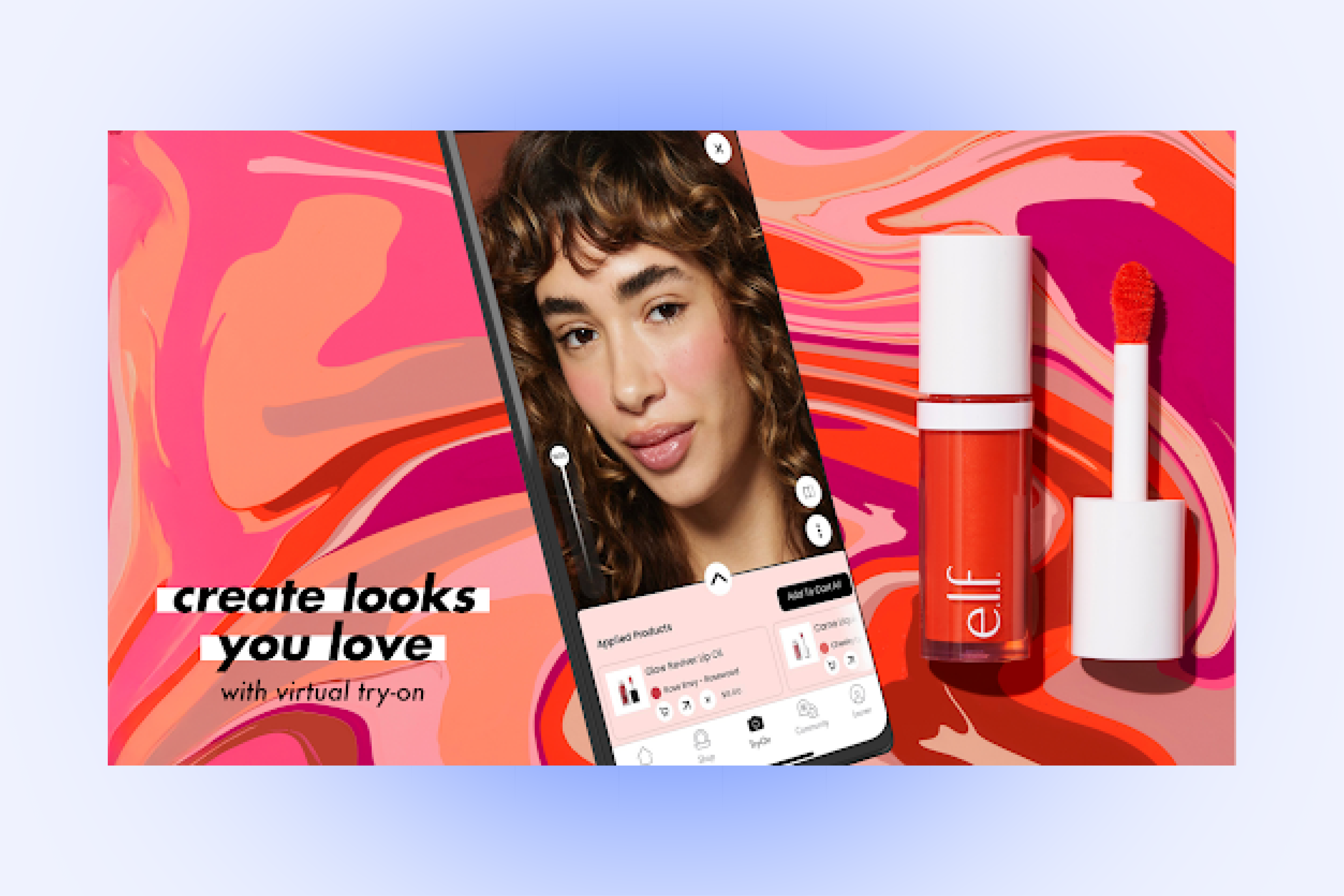
Customers use their phone's front camera, select a product, let's say red lipstick, and then their lips turn to that colour.
And they can see how the lipstick will actually look on them.
Key takeaway: Allows customers to feel confident about the product through “Try on.” This will make them more decisive about actually buying the item.
2. Brand community
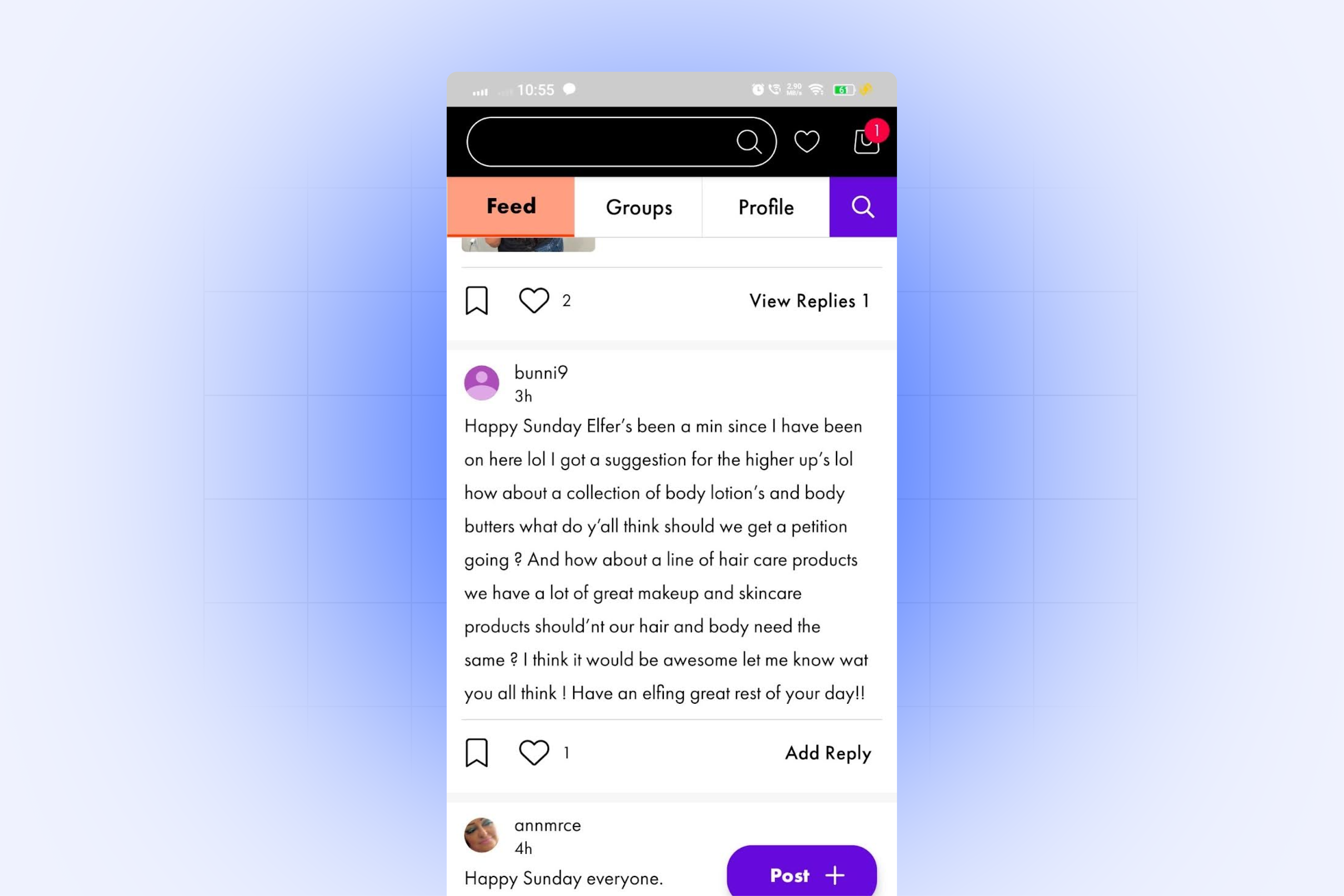
The company listens to customers and interacts with them on multiple channels regularly.
You might think that's what every brand says, but Elf CEO Tarang Amin shared in a HBR post that they actually practice what they preach.
He explained an instance where community members asked the brand to offer a prestige lip oil that was selling in the market at $40 at an affordable price.
Upon the consumer's request, Tarang and his team, instead of simply cutting the cost, studied the oil from scratch and created their own formula.
It had the exact glossy effect but with more hydration, a larger applicator, and was priced at $9.
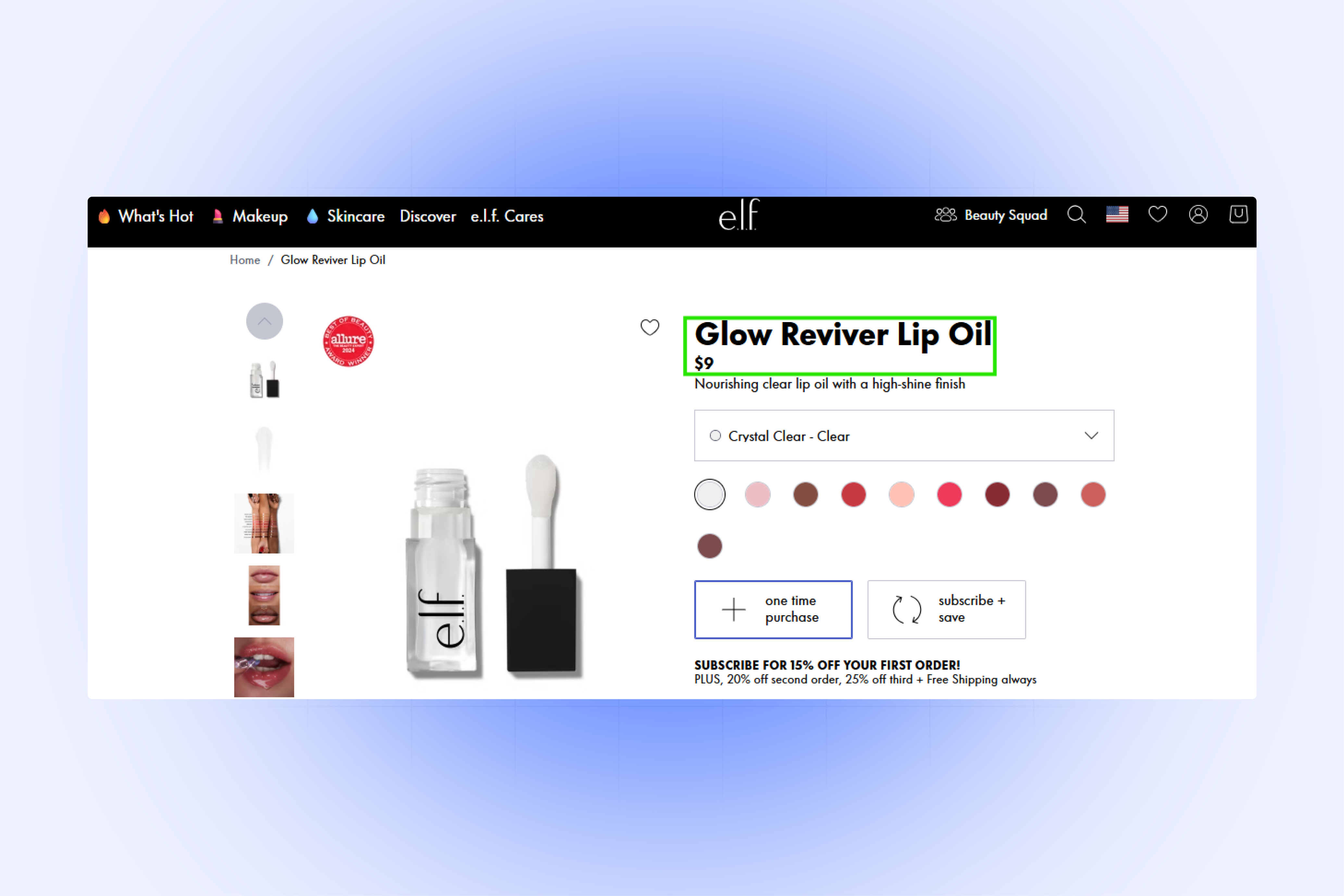
The crazy thing is, the product started selling almost immediately after the launch, and their TikTok got flooded with user videos mentioning how they preferred their oil.
Key takeaway: Build a community of customers and religiously listen to their feedback. Like how this one customer in the Elf community repeatedly demanded hair products. The brand must have seen it and is probably working on such products. This alone is enough to grow your business more than running an endless number of campaigns and help you build a closer brand-customer relationship.
3. Customer-centric PDP and PLP
Elf’s PDP and PLP are a masterclass on conversion rate optimization. At first glance, you’ll notice the information provided is specific and in a set sequence.
At the top, you see the product carousel with multiple superior quality images and a demo video of real models describing the product application in detail.
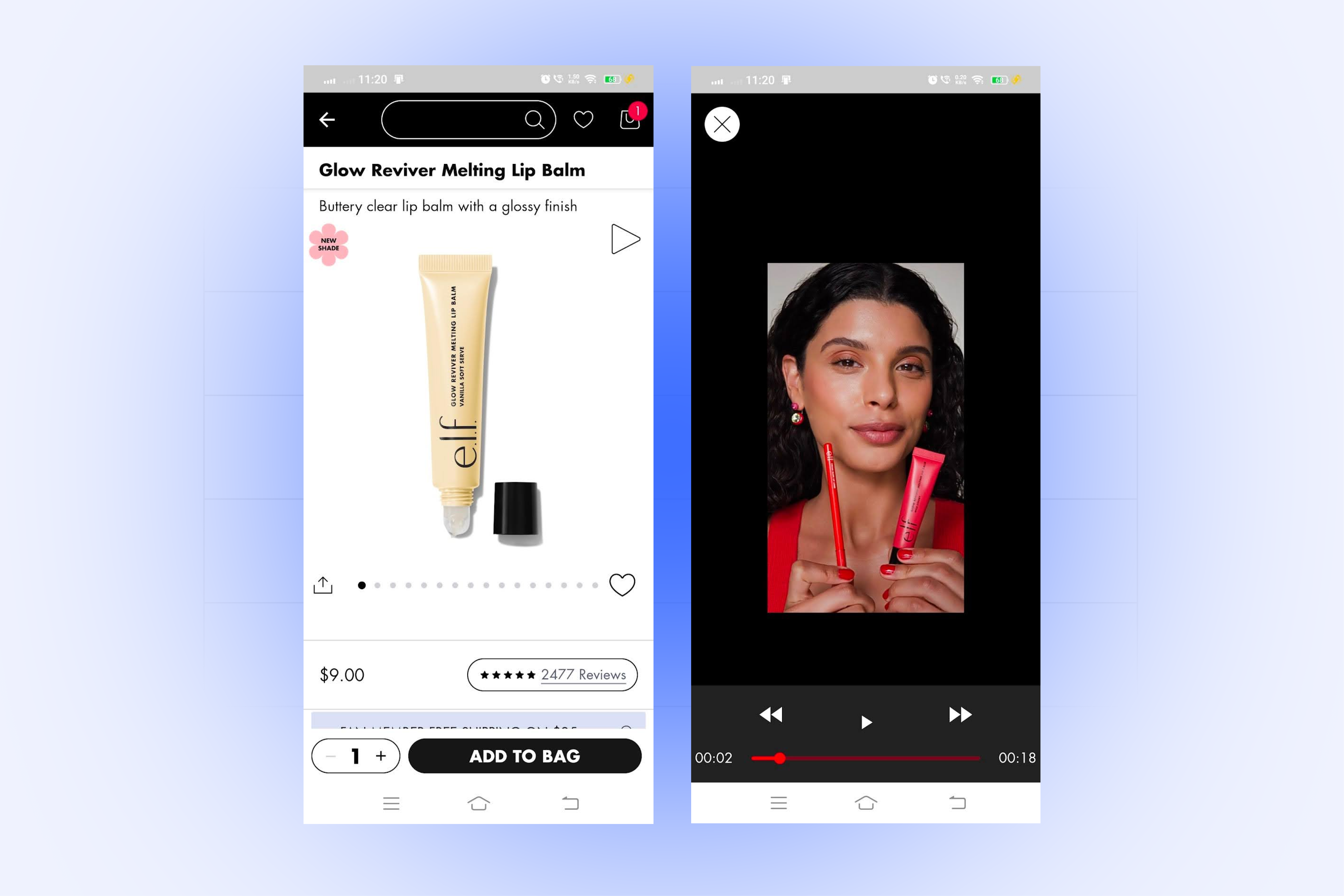
You’ll also notice some subtle but clever elements, such as the “New Shade” tag, heart icon, people can click to save the product, and share options at the bottom left corner of the product.
All these help create engagement for the product.
Next, you’ll see offers/discounts intended to nudge customers. Followed by a color range.
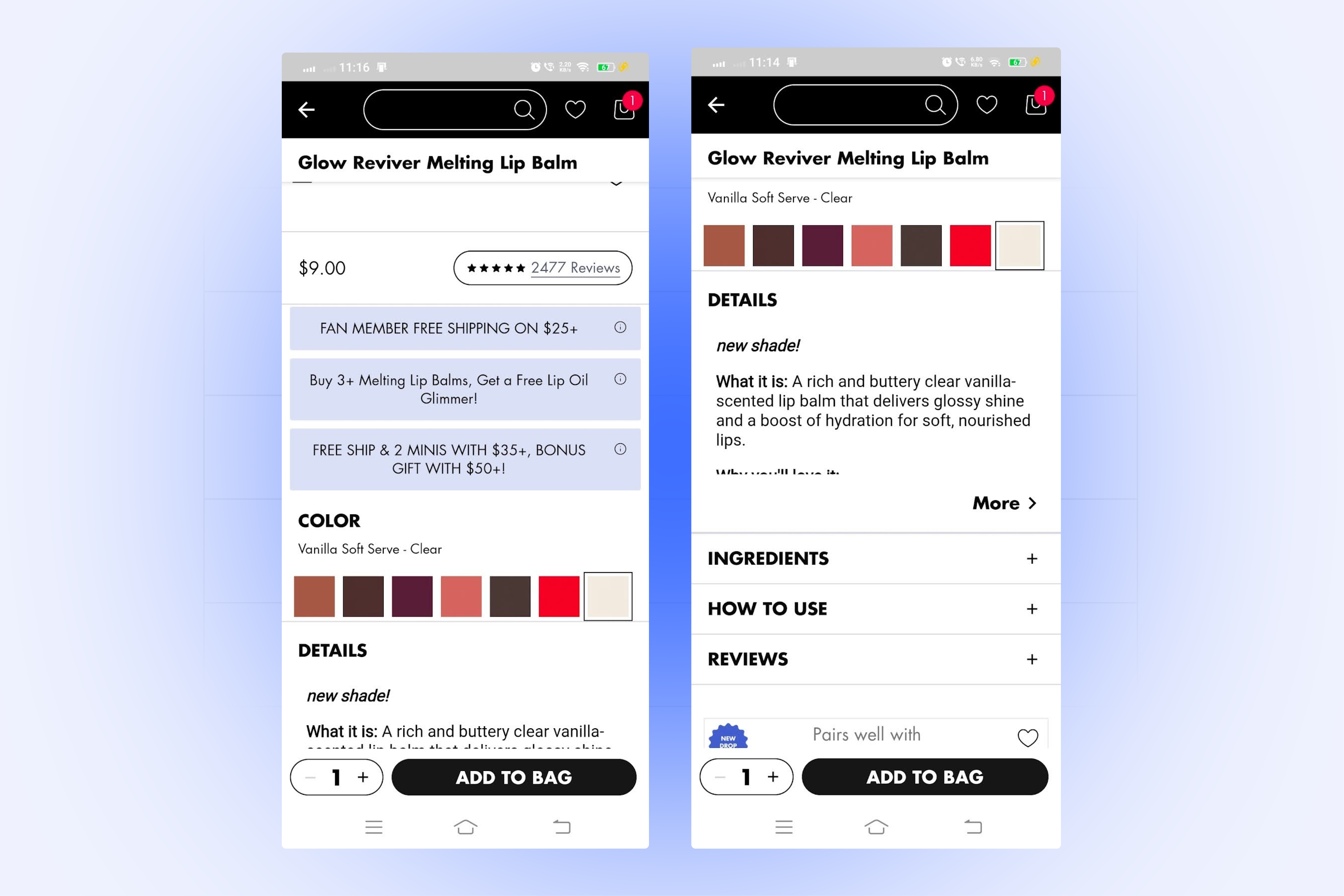
Then comes the important information every customer looks for.
- Details: Explains what the product is, why people will love it, key ingredients, and a small, fun description.
- Ingredients: Explains all the ingredients used in the product, along with a short note on the company rules
- How to use: Explains its application in two to three steps
- More reviews
This is followed by a couple of product recommendations labeled as “pairs well with.” This is an excellent upsell strategy.

You’ll see some logos around Elf’s brand principles like “vegan,” or "cruelty free.”
It's Elf’s way to address those 7 in 10 customers who prioritise sustainability and environmentally friendly products.
Next comes personalized product recommendations, which again present a potential upsell opportunity.
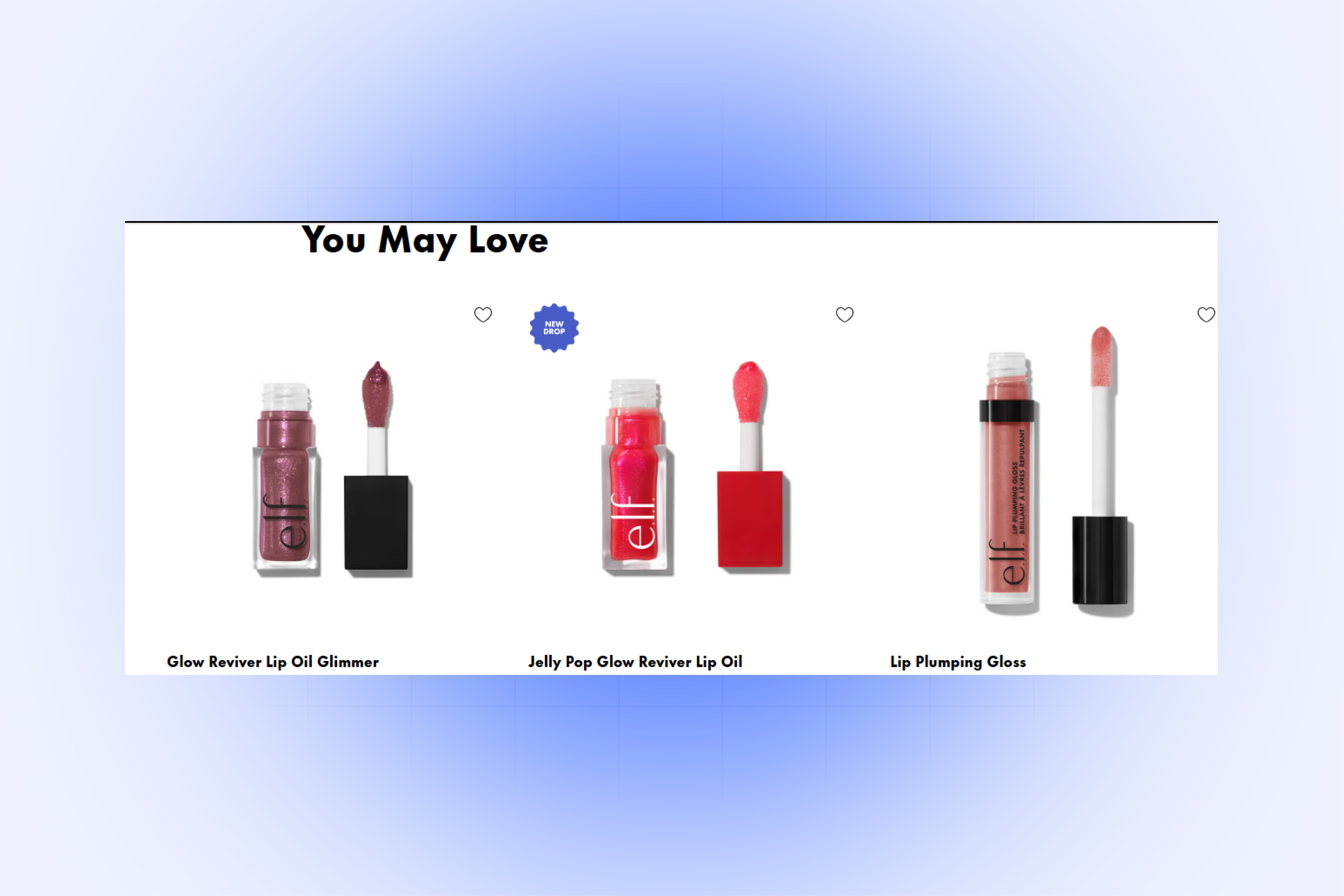
At last, as the saying goes, people buy from people. The page ends with user-generated content that smartly answers any second doubt and reaffirms the consumer’s buying decision.
Key takeaway: The Product page is where the actual sales happen, ensure it does justice to the customers and answers all of their objections they might have regarding the product. Look for upsell / cross sell opportunities that complement the item naturally..
4. Loyalty Program and Membership
At the heart of Elf’s marketing strategy is its loyalty program known as “Beauty Squad.”
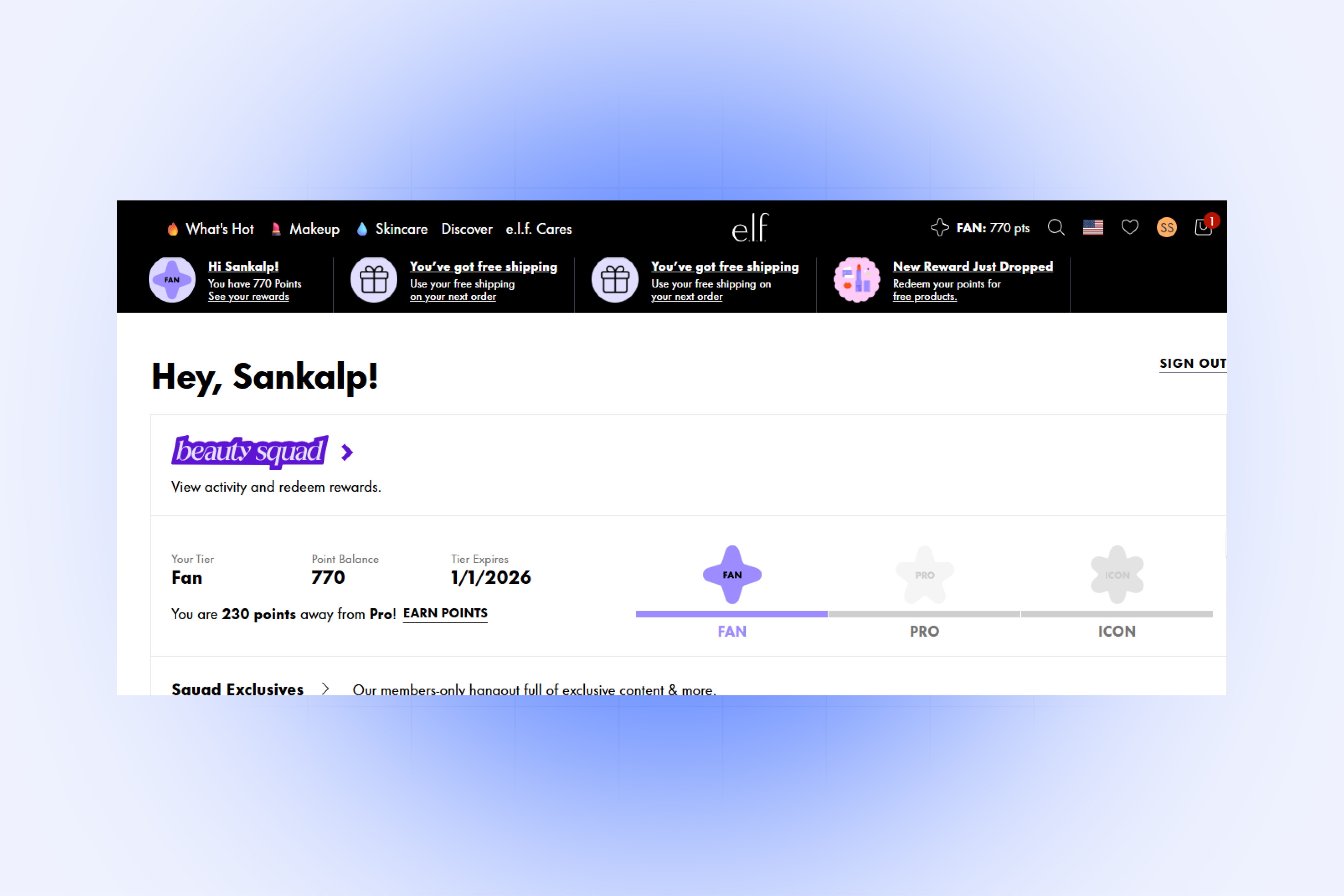
With over 4.5 million paid members whose lifetime value is 166% higher than non members, the program generates 80% of website and 95% brand app sales.
Ekta Chopra, ELF's chief digital officer, in a recent Glossy interview, explained that since the program's launch in 2016, it has undergone several iterations.
And in 2023, she revamped the program by gamifying the shopping experience across touchpoints based on customer data.
This increased monthly active app users by 125%, engagement by 76% and conversion rates by 77%.
Key takeaway: Build an exclusive community of high intent customers, provide them exceptional services, irresistible offers, and their LTV will compound over time.
5. Push notifications
Elf has incorporated push notifications as part of its broader communication strategy since 2023.
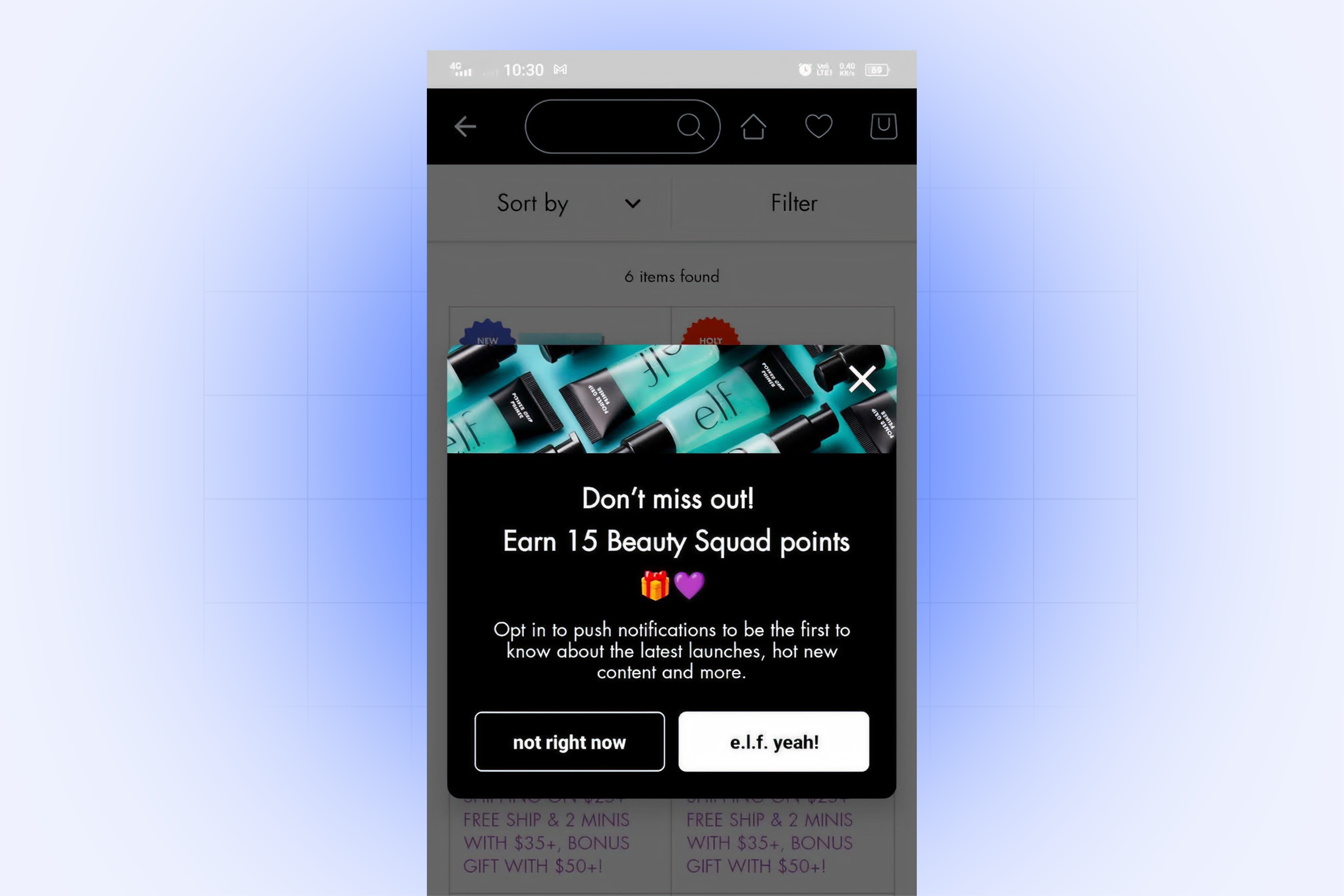
First, they use contextual push notifications that respond to user behavior. This means sending reminders for things like cart abandonment, product views, or loyalty milestones—messages that arrive right when a customer is most likely to act.
Next, promotional pushes deliver targeted offers, flash sales, and new product launches. These are personalized based on customer preferences to keep the communication relevant without overwhelming users.
Lastly, transactional pushes provide important updates such as order confirmations, shipping notifications, and reward alerts. These messages keep customers informed throughout their shopping journey.
Each push notification includes deep links, so users can tap and go directly to the product page, cart, or rewards section in the app, removing any friction from the shopping experience.
Key takeaway: Elf’s targeted push notifications increased engagement and conversions without overwhelming customers.
Why Your Brand Needs an App Like Elf Cosmetics
If you feel tempted to achieve similar results for your brand as Elf, be sure first to build the pillars necessary to execute such marketing activities.
This includes your brand's own mobile application.
Why app, because customers who download your app when they can easily shop the same products from your website shows they intend to be a part of your brand.
To ensure such customers get the best app experience, you can’t just create a subpar app and think it’ll do the job.
You need a high-performing native mobile app to give each customer a memorable and personalized experience.
Appbrew helps you create a mobile app similar to Elf Cosmetics easily, without spending a dime on expensive developers or AI tools. Here’s how it works:
1. One click personalization
Elf's omnichannel game plan is all about collecting and using behavioural data to create hyper personalised content and experience to each customer's liking.
In the same way, Appbrew helps you personalize discounts, content/offers unique to each customer based on their past shopping history.
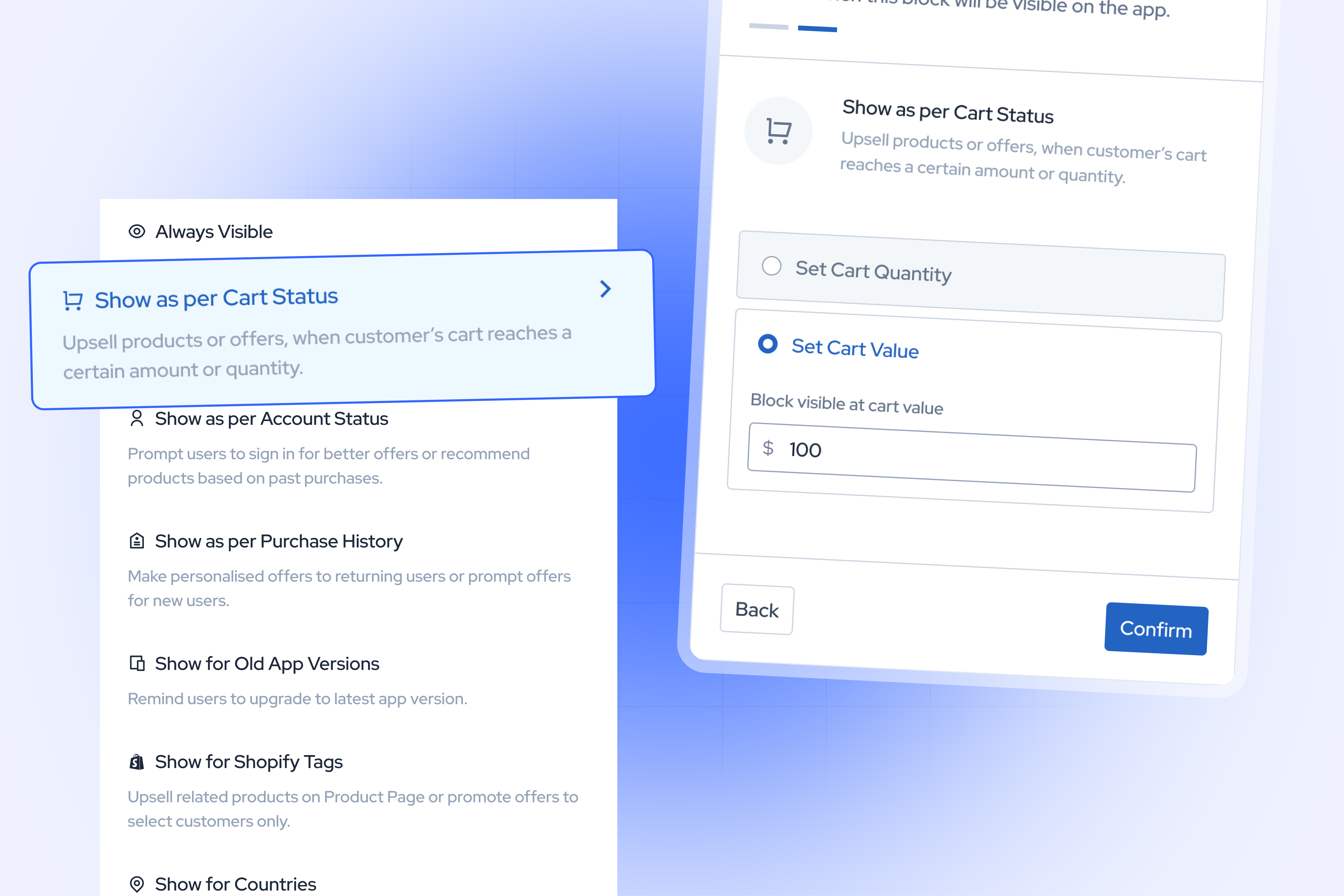
Example scenarios:
- Giving an exclusive discount or early access to upcoming collections to people who spent $600 in the last three months
- Rewarding shoppers with a special discount if they reach a specific cart threshold
- Customising product catalogue based on customer location
2. App only discounts and promotions
Inside the Elf app, you see the stories section showing content around upcoming launches, new shade drops, fast-selling items, etc.
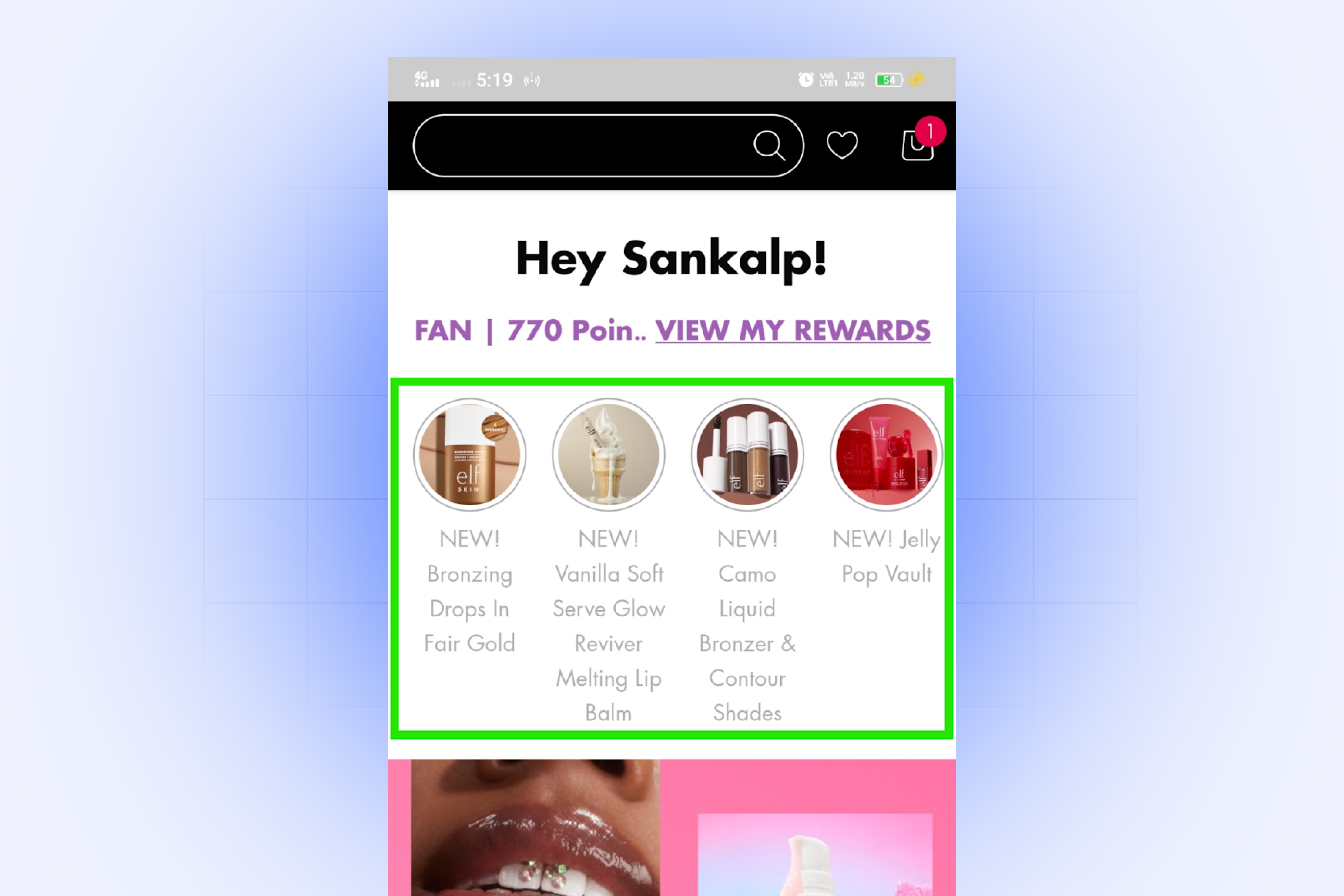
All these promos show only on their app, you don't see them on the website.
This is how the brand attracts and creates fomo among customers, who eventually shift to the app.
Similarly, Appbrew helps you run app only discounts and offers, such as:
1. Percentage off discounts: Get 15% off for orders above $200
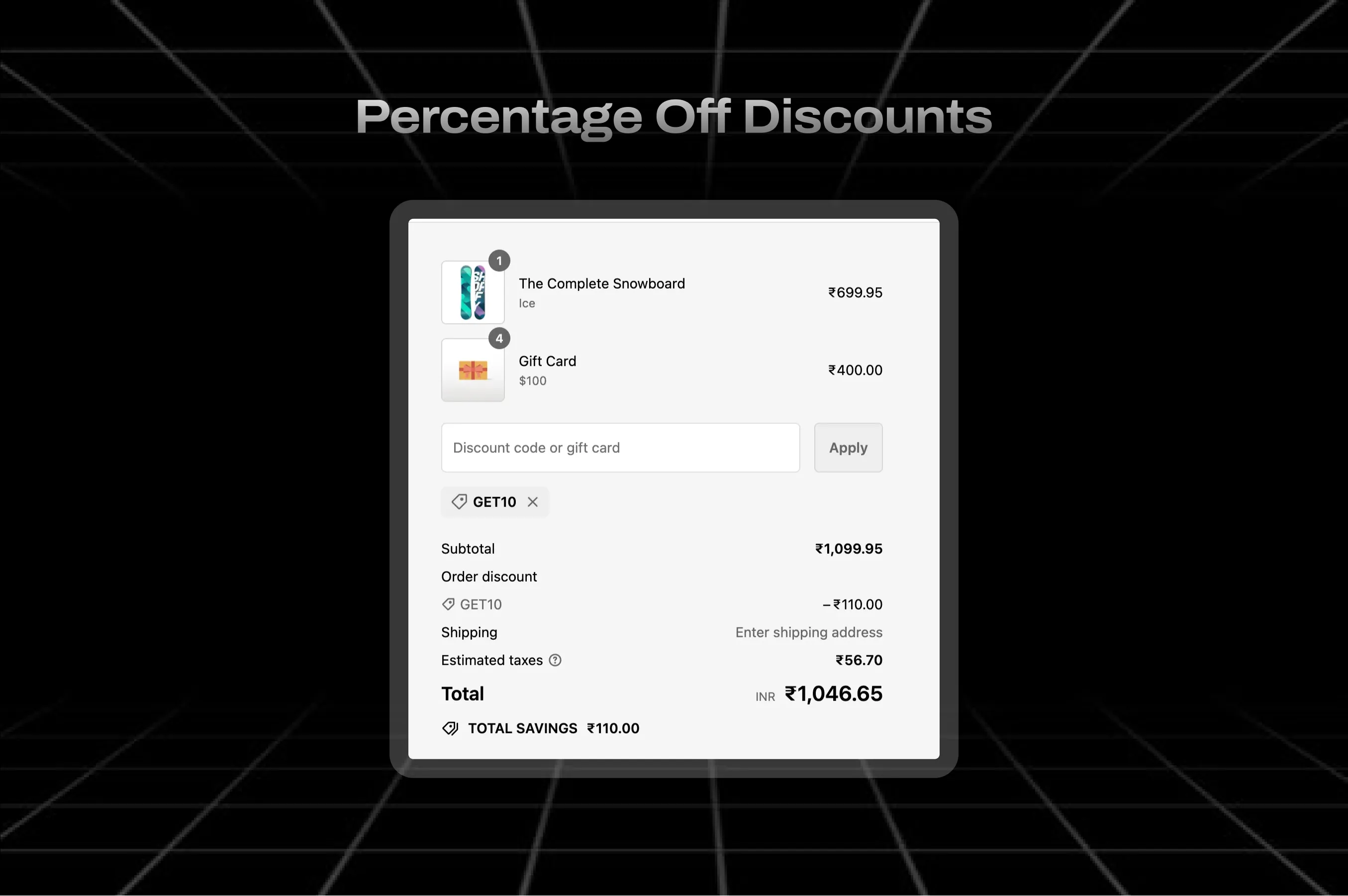
2. Fixed amount off discounts: Get $10 off on orders above $100
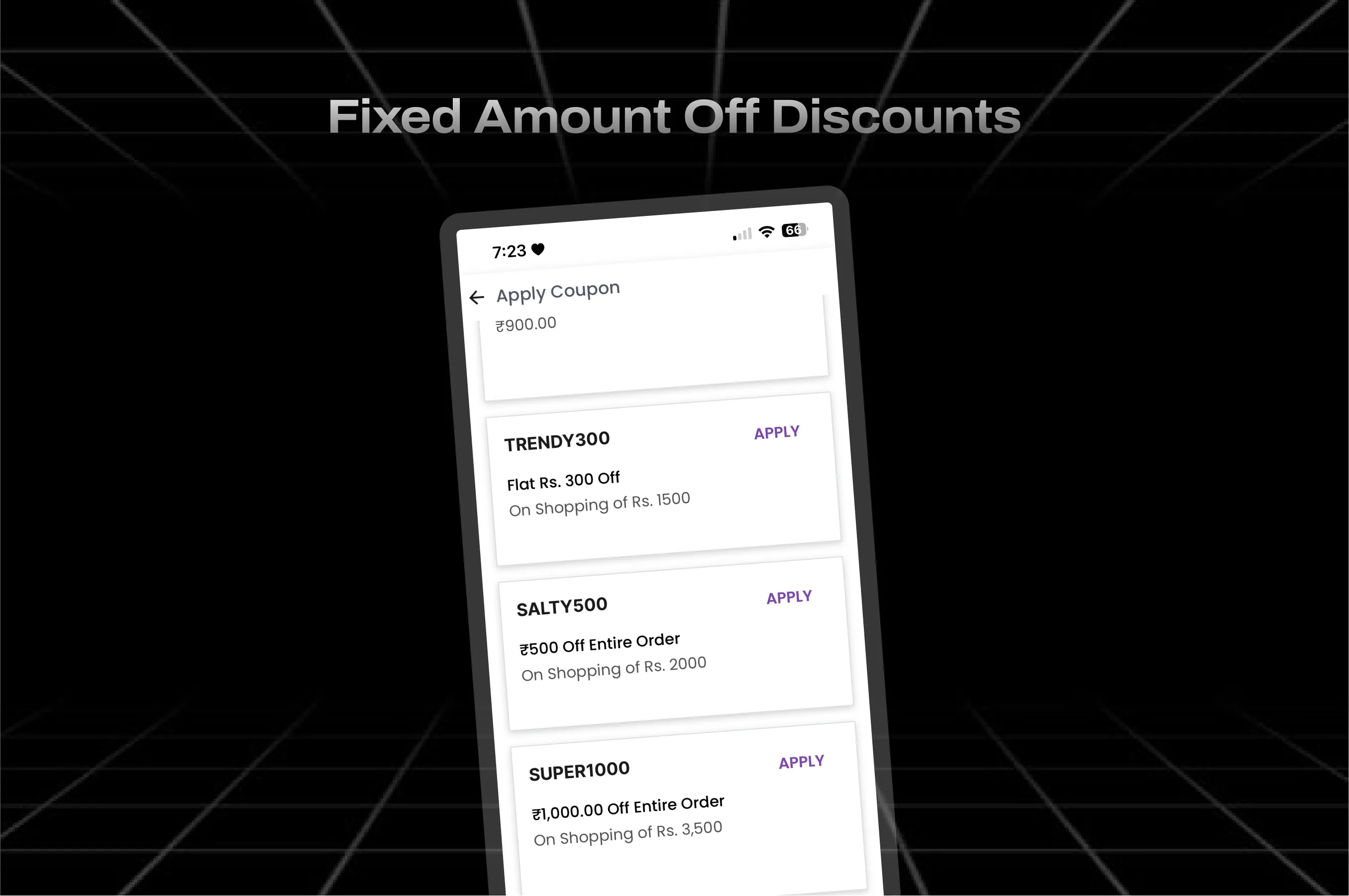
3. Buy X get Y offers: Buy any 2 products and get 20% off
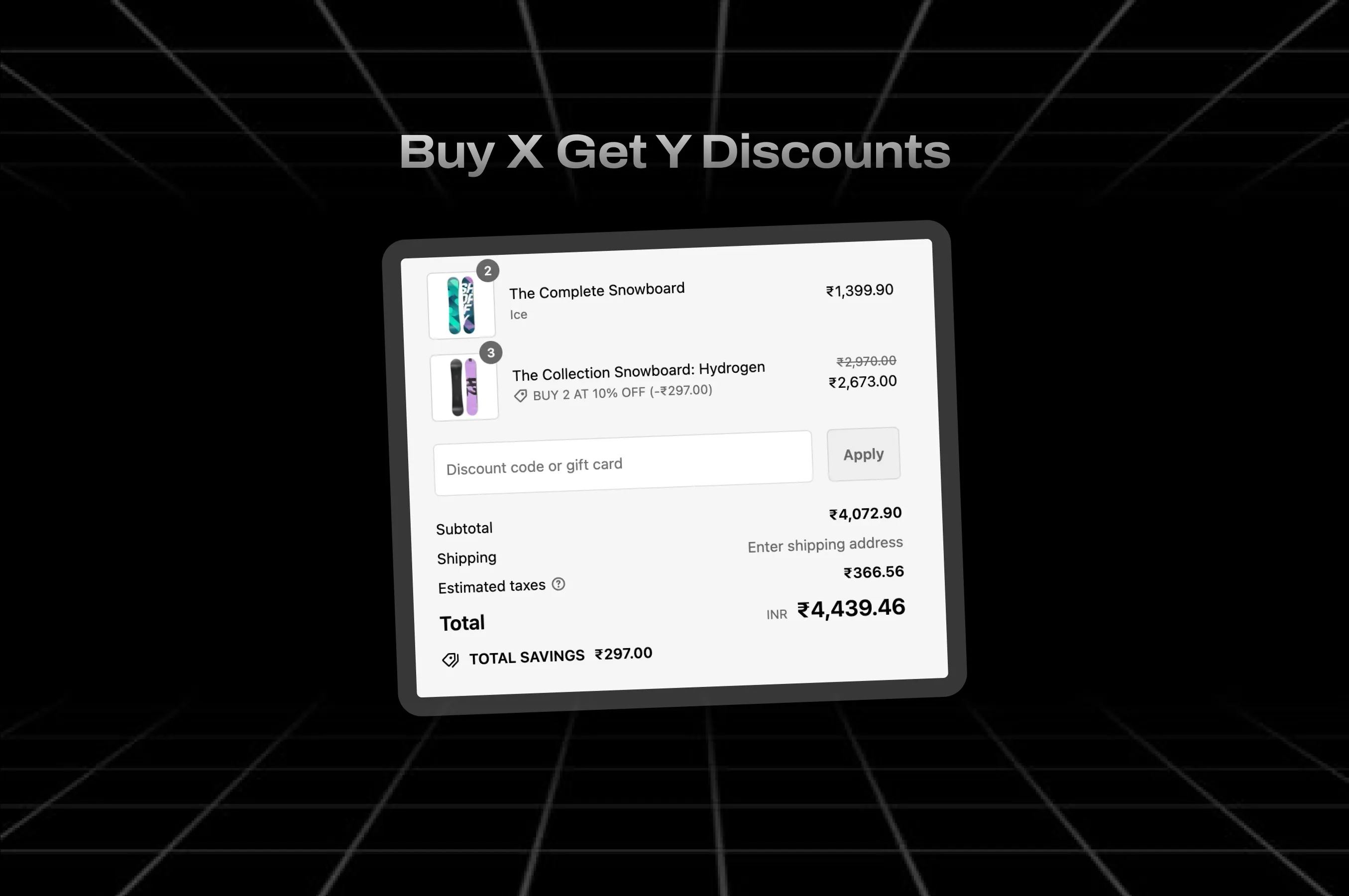
4. Bundle discounts: Buy 2 products from a collection for $60
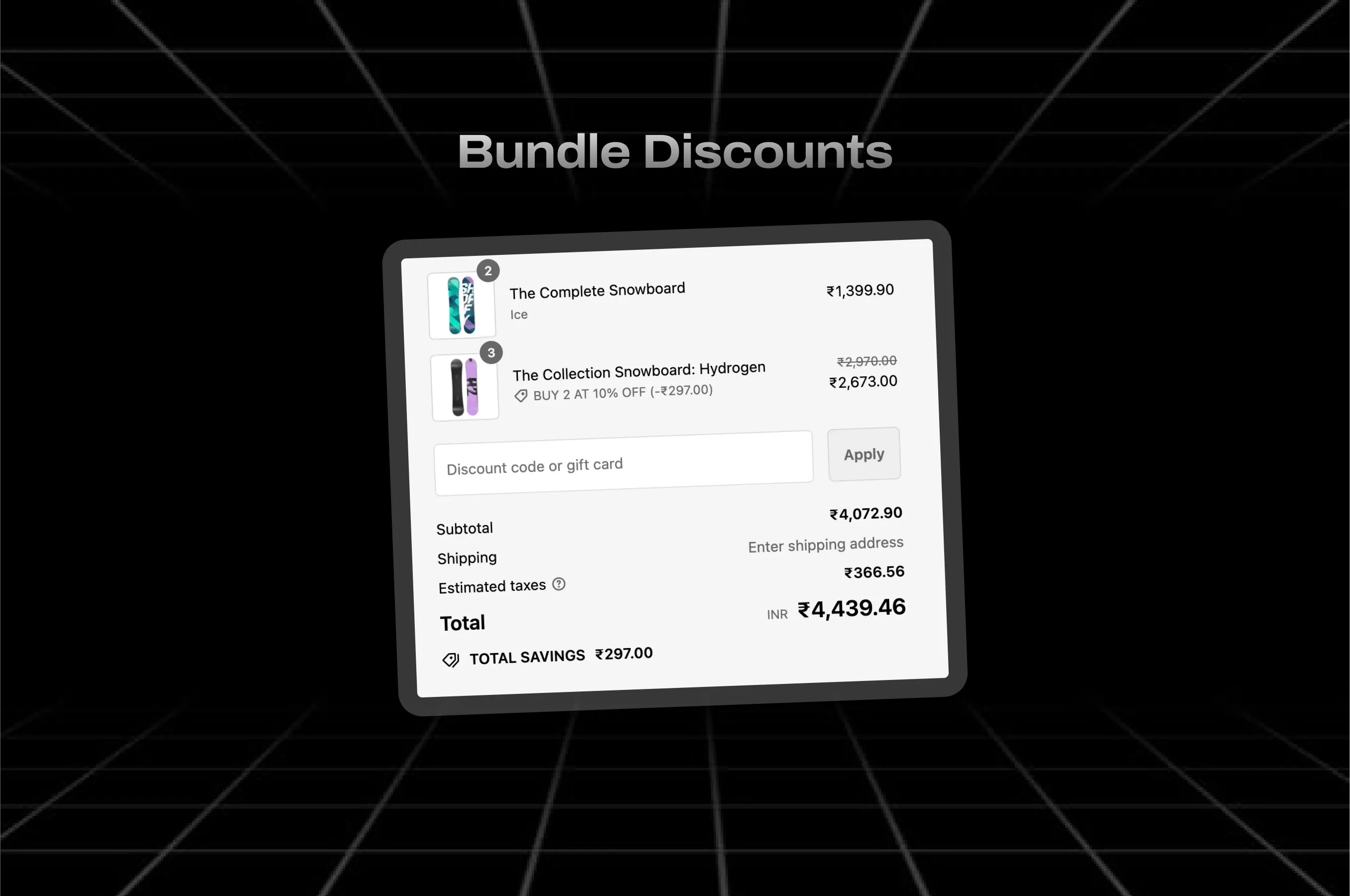
3. In-App subscription
Elf’s beauty squad brings millions of subscribed customers who shop more frequently compared to non-subscribed ones.
This is such a relief because unlike other brands that don’t build a community of subscribed customers, Elf community saves it from endlessly pumping budget into soaring CAC.
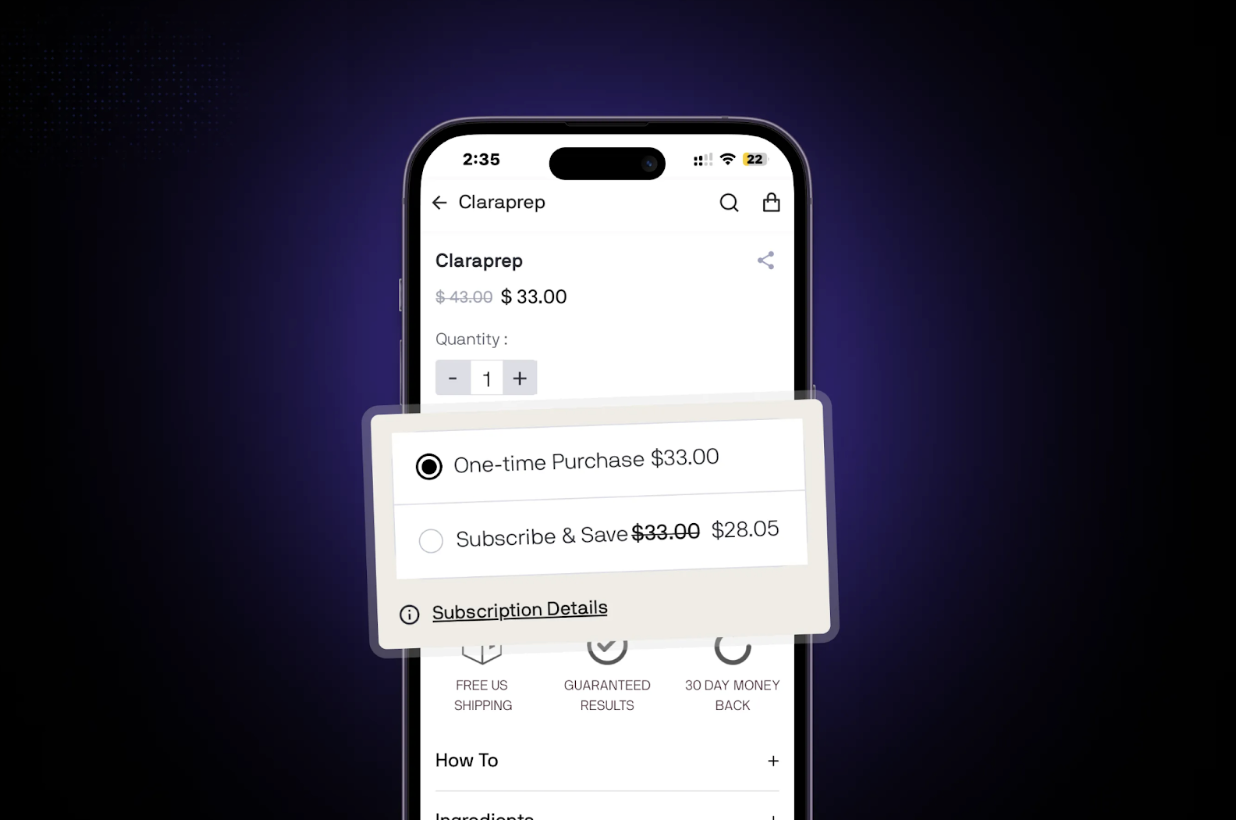
With Appbrew, setting up subscriptions in your app is easy and seamless. It integrates with major providers like Recharge, Stay AI, and Prive, allowing you to add a subscription option to every product.
Customers can effortlessly subscribe to products, manage deliveries, or skip shipments directly within the app, giving them maximum flexibility and control.
4. Advanced analytics
Elf always focused on data to power its marketing.
Similarly, Appbrew helps you build a holistic customer journey that keeps people coming back by providing data on
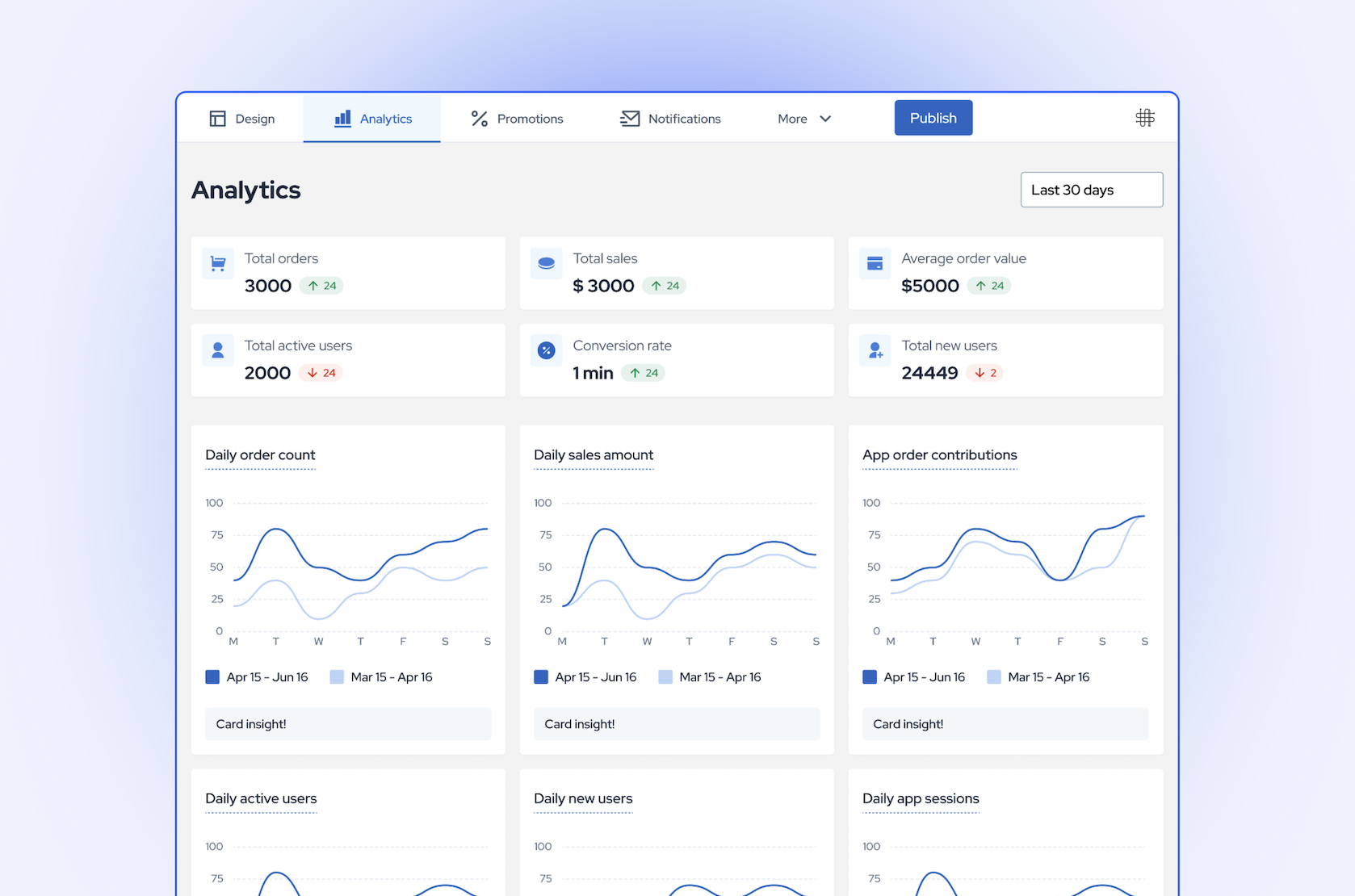
- Engagement
- Orders
- Customers
- Retention
For that, Appbrew also enables you to track push notification data on notifications
- Sent
- Clicked
- ROI
Use this data to create targeted copy and time your notification to achieve maximum engagement.
Schedule a free demo with the Appbrew team to explore what ROI a mobile app can generate for your Shopify Store today!

.png)

